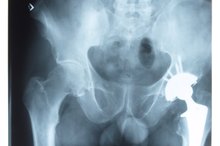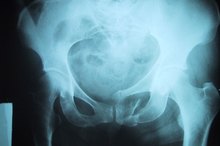Treatments for Pelvic Phleboliths
Pelvic phleboliths are calcium or lime masses that form on the walls of veins. Although such masses are most common in the pelvic region, they can grow anywhere. In most cases, they are harmless. At times, they can be a sign of a more serious underlying condition but are often considered incidental findings, problems that are apparent but rarely need treatment. While most people are unaware of the presence of phleboliths, they might seek treatment for symptoms such as back pain, pelvic pain, and menstrual or urinary track issues.
If you are experiencing serious medical symptoms, seek emergency treatment immediately.
Causes
Causes of the formation of pelvic phleboliths are not clear. Generally, they form due to some type of trauma to the vein wall. Women tend to get them more than men do because they have more veins in the pelvic region. Phleboliths can be a sign of venous hypertension, so it’s important to check your blood pressure if phleboliths are found. In most instances, there is no reason to remove phleboliths. However, any growth in your body can lead to inflammation, infection and possibly pain. If you are experiencing pelvic pain and pheloboliths are present, your doctor might decide removal is warranted.
- Causes of the formation of pelvic phleboliths are not clear.
- Phleboliths can be a sign of venous hypertension, so it’s important to check your blood pressure if phleboliths are found.
Sclerotherapy
Types of Pelvic Calcifications
Learn More
Designed to treat venous malformations, sclerotherapy can be used to close veins with phleboliths. The procedure is performed by inserting a needle into the affected vein and injecting a type of radioactive dye referred to as a sclerosant. This will effectively shrink the vein. Sclerotherapy will occasionally need to be repeated to close the vein permanently.
- Designed to treat venous malformations, sclerotherapy can be used to close veins with phleboliths.
Endovenous Laser Therapy
Another option for treating phleboliths is endovenous laser therapy 1. Designed for problems such as varicose veins, this treatment also works to remove phleboliths. A tiny laser fiber inserted into the affected vein delivers energy, closing the vein. It is minimally invasive and takes about an hour.
- Another option for treating phleboliths is endovenous laser therapy 1.
- Designed for problems such as varicose veins, this treatment also works to remove phleboliths.
Surgical Excision
What Are the Treatments for a Vertebral Hemangioma?
Learn More
Surgical excision is more invasive and rarely deemed necessary, but it is performed if other methods fail. For this treatment option, a surgeon will remove the vein and surrounding tissue.
Related Articles
References
Writer Bio
Writing since 1999, Darla Ferrara is an award-winning author who specializes in health, diet, fitness and computer technology. She has been published in "Mezzo Magazine" and Diet Spotlight, as well as various online magazines. Ferrara studied biology and emergency medical technology at the University of Nebraska and Southeast Community College.








